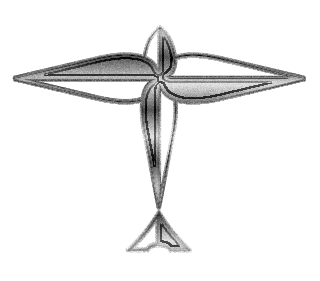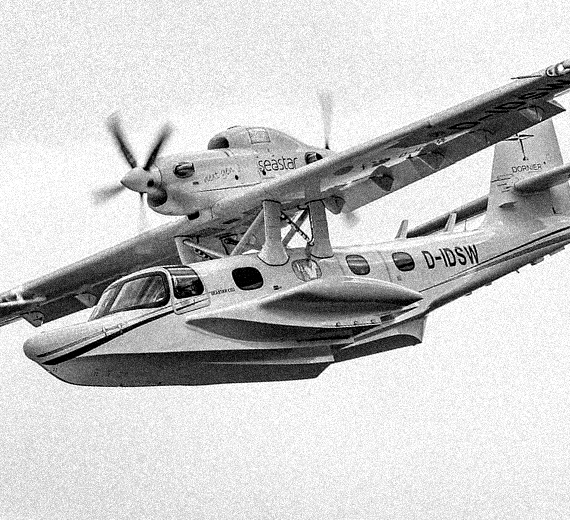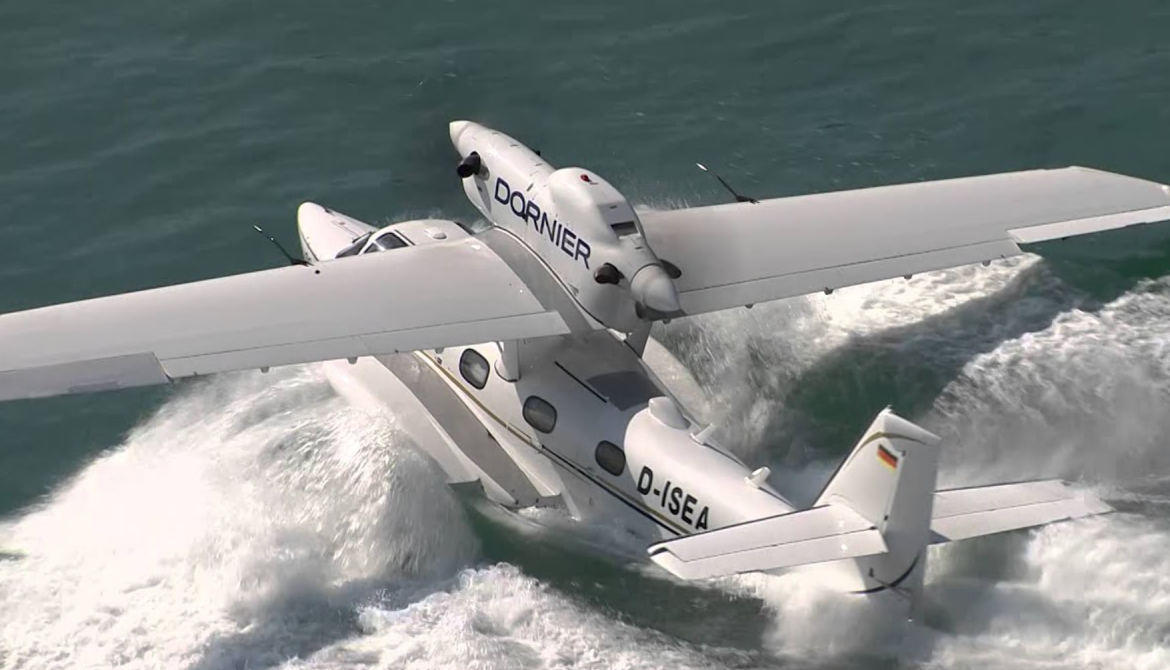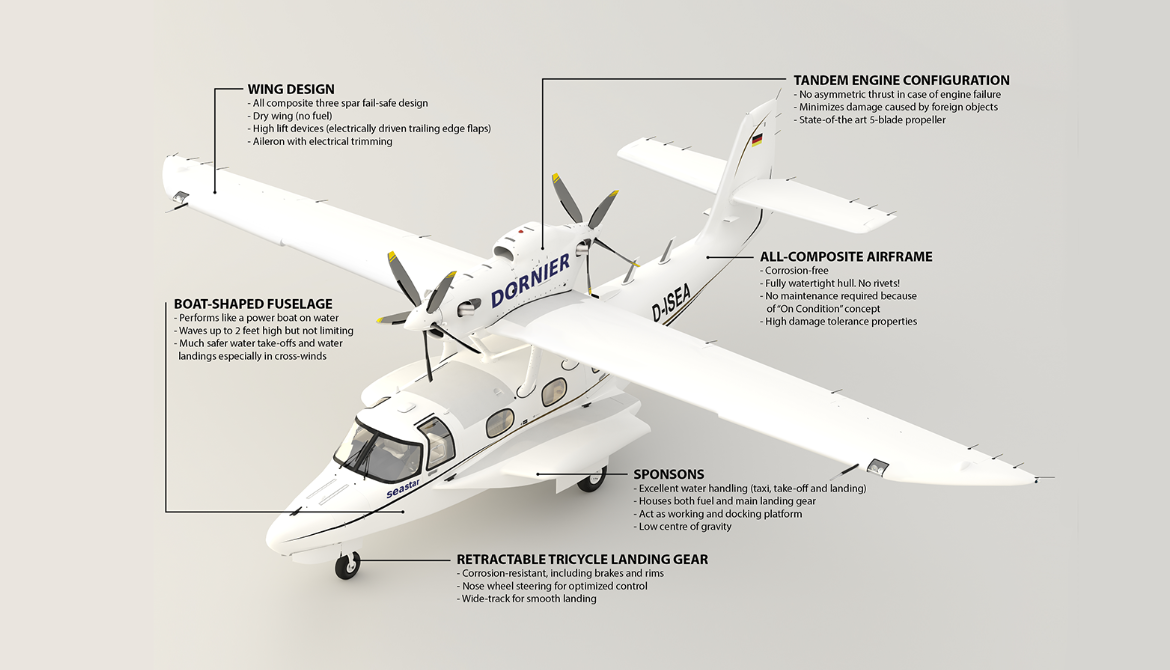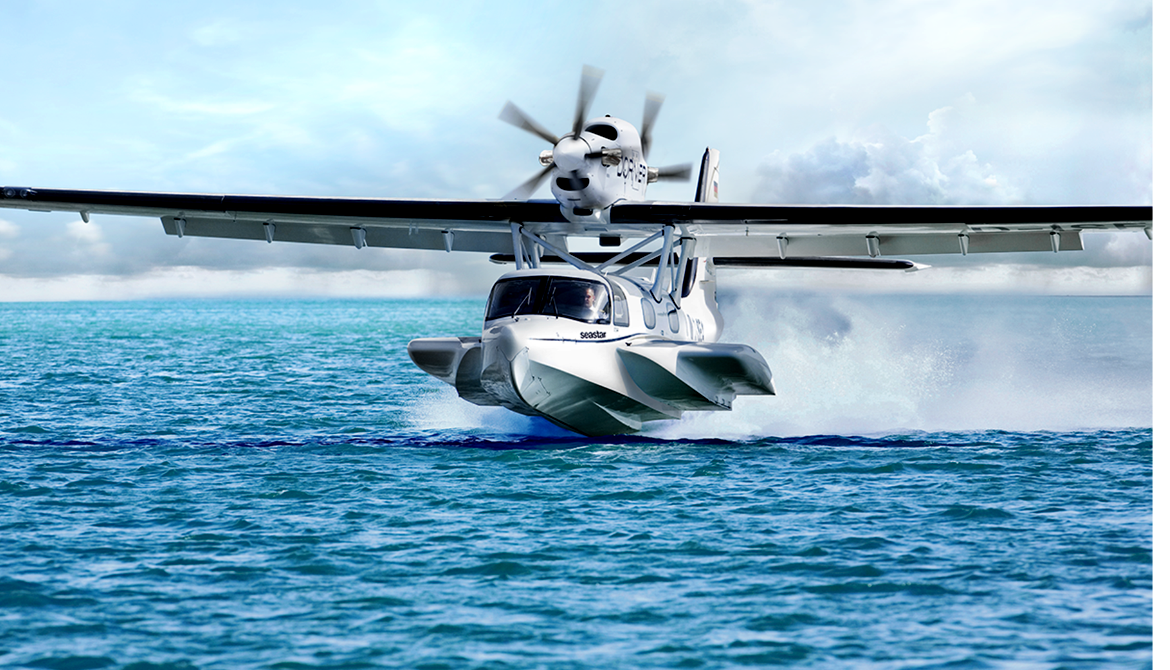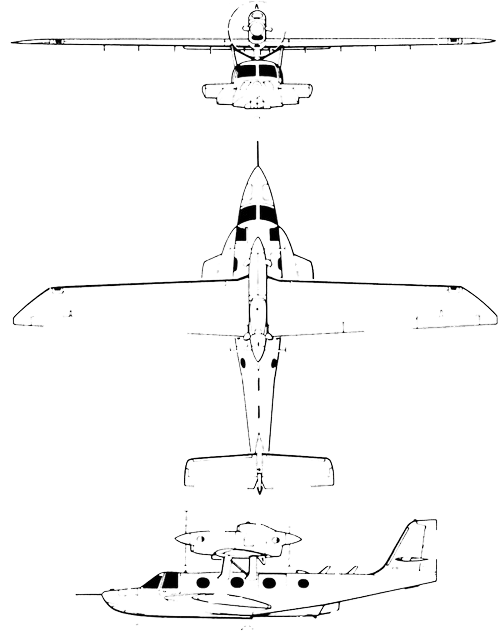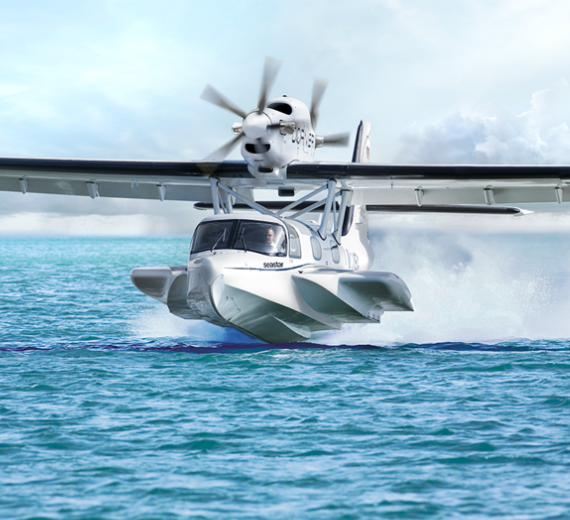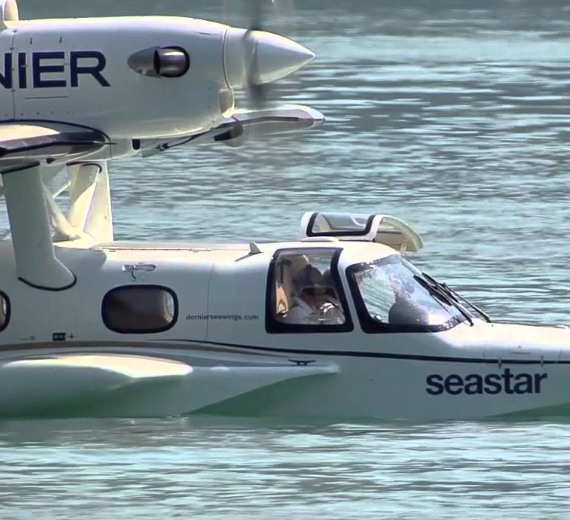Dornier Seastar CD-2
 |
|
| General information | |
|---|---|
| Type | Utility amphibian |
| National origin | Germany |
| Manufacturer | Dornier Seawings |
| Designer | Claudius Dornier Jr [de] |
| Number built | 2 |
| History | |
| First flight | 17 August 1984 |
.
History Dornier Flugzeugwerke.
Dornier Seastar CD-2
Manufacturer Dornier
First flight 17 August 1984
Number built 2

The Dornier Seastar is a turboprop-powered amphibious aircraft built largely of composite materials. Developed by Claudius Dornier Jr of Germany, it first flew in 1984. The design is owned by Claudius Jr's son, Conrado, who founded Dornier Seawings AG (now Dornier Seawings) to continue work on the project after two previous firms, Claudius Dornier Aircraft and Dornier Composite Aircraft, both went into bankruptcy. Development of the aircraft was put on hold without any production Seastars being completed in 1991
Multiple attempts to put the Seastar into production, often as a joint venture with other aerospace companies, were made throughout the 1990s and early 2000s. However securing the necessary financing to proceed to the manufacturing phase proved challenging. After several false starts, in October 2009, Dornier Seawings announced that it was formally launching manufacturing of the type, although no aircraft were actually built. In November 2018 the company received US$170 million in funding from its Chinese backers to construct a manufacturing facility and one prototype for flight, with production to follow in 2021
Design

Seastar, 2010 The Dornier Seastar is a parasol wing flying boat, powered by a pair of Pratt & Whitney Canada PT6A-112 engines, mounted in a single nacelle over the wings in a push-pull configuration. In general layout, it strongly resembles both the innovative Dornier Do J Wal all-metal monoplane flying boat of the 1920s, of which over 250 examples were built, and its direct successor, the larger Dornier Do 18 of the 1930s. Locating both of the engines in the center of the wing enables the weight of the engines to be more effective in reducing any induced rolling motions; it also protects the engines from water spray, reducing corrosion, and eliminates asymmetric thrust when operating
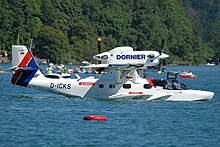
The Dornier Seastar on the Wolfgangsee in Austria 
Rear view of a Seastar
0
KmCeiling
0
Km/hStall speed
0
Km/hAircraft Speed
0
Max Crew
Photo Gallery
Dornier Flugzeugwerke
Dornier Seastar CD-2)


Dornier Flugzeugwerke
Dornier Seastar CD-2)
General Info
-
-
- Crew: one
- Capacity: 12
- Length: 12.70 m (41 ft 8 in)
- Wingspan: 17.74 m (58 ft 2 in)
- Height: 4.83 m (15 ft 10 in)
- Wing area: 30.6 m2 (329 sq ft)
-
Powerplant
-
-
- Empty weight: 2,900 kg (6,393 lb)
- Max takeoff weight: 4,600 kg
- Fuel capacity: 1387 kg (3056 lb)
- Powerplant: 2 × Pratt & Whitney Canada PT6A-135 turboprop, 478 kW (650 shp) each
- Propellers: 4-bladed McCauley 4HFR34C760/95DA, 2.4 m (7 ft 10 in) diameter front, 2.35m aft
-
Performance
- Cruise speed: 330 km/h (210 mph
- Stall speed: 120 km/h flaps 40°
- Never exceed speed: 417 km/h
- Service ceiling: 4,500 m (14,800 ft)
- Wing loading: 95 kg/m2 (19 lb/sq ft)
Links to Youtube & Others
With comfortable seating for up to twelve passengers and low direct operating cost (DOC), the Seastar is the best choice for fast transportation and corporate .
Dornier Seastar
The New Generation Dornier Seastar is the most advanced amphibious aircraft. How exactly is it different from the Dornier Seastar CD2.
Youtube Link
We made a video to show you some of the most important innovations of the New Generation Seastar. #dornierseastar #dornier #aviation #aerospace #aircraft #innovation
